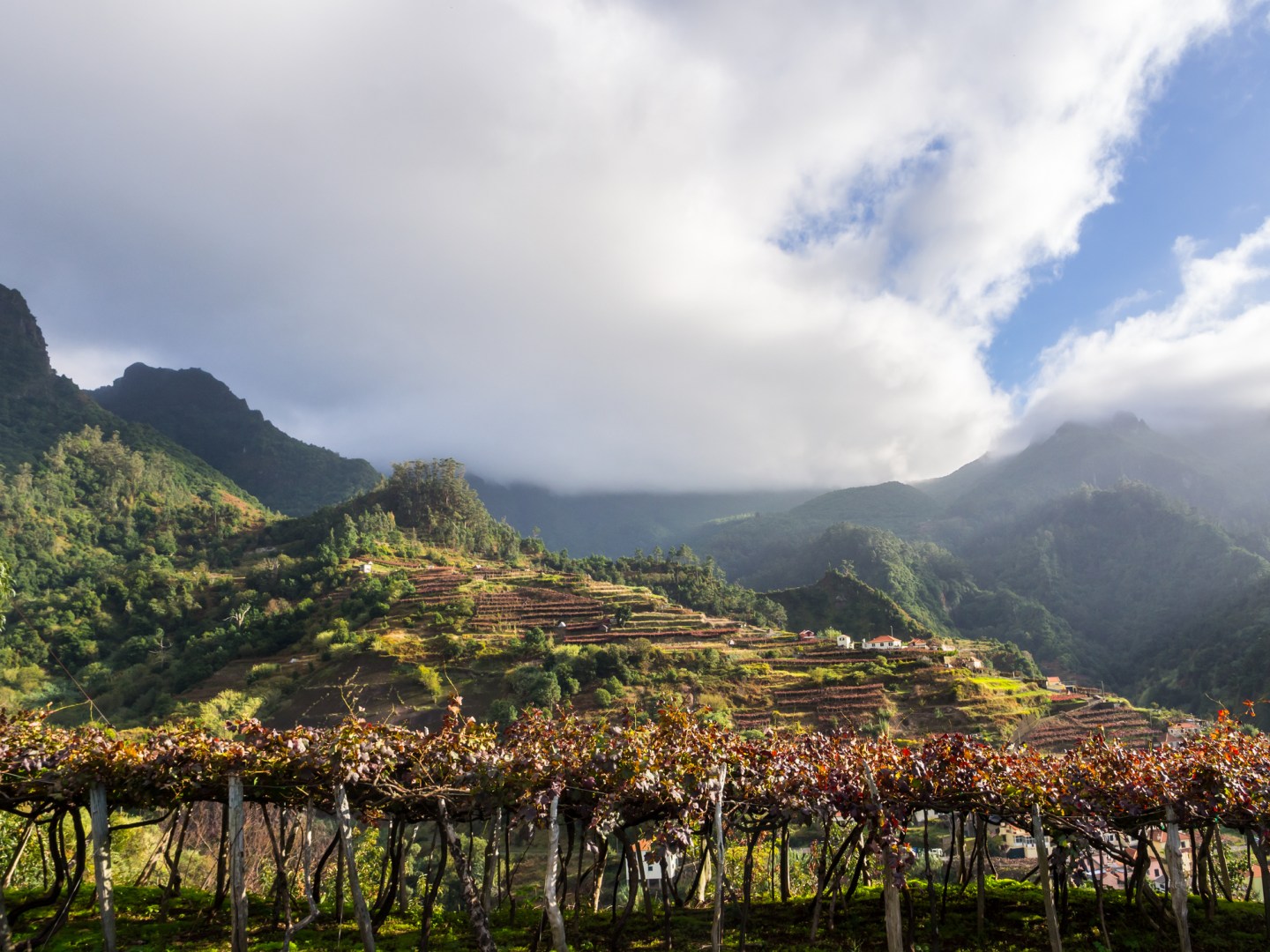This Unique Wine Is the Newest Collector’s Item in Asia

When your cellar is already stocked to the gills with Bordeaux and Burgundy, what’s next? For Asian wine aficionados, it is Madeira.
A fortified wine made on a tiny island of the same name, Madeira is limited in supply, thanks to its small production area, and now hot in demand in Asian markets including Japan, China, and Russia. It’s a rather new phenomenon for the wine style and its eight heritage producers. In the past decade, Japan has been one of the largest consumers in the world for the fortified wine, and the number of liters exported to the country and neighboring areas has exploded. In China, it’s grown 1,300% in the past three years alone.
“China has, in recent years, awakened to the wine world,” explains Maria Gorete de Sa of the Madeira Wine Institute. “Wine consumption has been increasing, and recent studies indicate that by 2020, 75% of the world value wine consumption growth will be the Chinese market.”
Madeira is not a wine you’ll find at every dinner party. It’s an esoteric style and an acquired taste, often evoking dried fruit and nuts. It’s had a long history as a wine brought aboard Portuguese ships for centuries as they sailed around the world from India to Brazil to Europe. It was once extremely fashionable—even served in celebration of the signing of the Declaration of Independence—but less so today as the wine landscape has become more saturated. It has a high alcohol content rate, usually hovering between 20% and 22%, and residual sugar keeps it stable for long periods of time. And as most people are not traveling via ships for months these days, it’s commonly reserved for dessert pours more than anything else.
But even among sweet sippers, Madeira is often overshadowed by a Sauternes or Port, both of which can age like Madeira but are styles more recognizable to the average diner. And there’s just not a lot of Madeira available. Only 3.37 million liters are made from 500 hectares by eight historic producers today.

Thanks to its limited supply, Asian collectors have hopped on the idea of adding the age-worthy fortified wine to their cellars, and they are hungry for more. They already have a taste for it. Japan started importing cooking-quality Madeira in the late 1960s, but in recent years, started serving drinking-grade Madeira in cocktail bars and restaurants. Neighboring countries have caught on; demand has grown exponentially in Russia and China. South Korea and Singapore also hold steady. At the same time, traditionally strong markets have decreased, including parts of the European Union, like the United Kingdom, Finland, and Greece. There is, after all, only so much Madeira.
Macao’s and Hong Kong’s relationships with China have also allowed Madeira to easily swing into the area. Macao, a Portuguese territory until 1999, has long consumed Portuguese products, including Madeira; its transfer to China in the past 20 years has not stopped its desire for Portuguese wine. As for Hong Kong, the elimination of the taxes and duties on wine in 2008 has made it the entry point for mainland China, and an important destination for wine sales and education.
Thus, Madeira producers have started focusing on Asia to help grow their businesses. Ricardo Diogo V. de Freitas, managing director of Vinhos Barbeito, explains that while his company has maintained its export volume for cooking Madeira, it has really seen an uptick in the drinking category in the past five to 10 years, specifically in bars. “We are focusing mainly in the consumption market, paying special attention to the wine bars, regular bars, and cocktail bars,” he says, adding that Barbeito currently exports 40% to 42% of its Madeira to Asia.
The popularity in hospitality establishments has led Madeira producers and the Madeira Wine Institute to launch educational programs in the region. For Freitas, that means visits twice a year to organize seminars and tastings for professionals and to launch any special campaigns for specific wines. Other producers, like Justino’s Madeira Wines, do the same. “Each year, we invest heavily in the promotion of Madeira wine in the Asian market,” Gorete de Sa says. “Either by organizing visits for journalists to the island or by organizing workshops, master classes, and tastings in the Asian market itself.”
Madeira also features the exact attributes that Gorete de Sa says Asian consumers crave. They constitute an exclusive and discerning group that looks for exceptional products that differ in their type, production method, and distinct qualities. “Madeira wine has some competitive advantages in this field because of its unique characteristics that distinguish it from other wines,” she says. “The result of the terroir allied to the production process, grape varieties, climate, orography, [and] tradition, among other factors, makes it very attractive to consumers.”
The Madeira Wine Institute is quick to point out that the EU and Madeira’s ruling country, Portugal, are still the world’s top consumers of the beverage. For producers, it’s important that Asian consumers understand the uniqueness of the wine as demand grows and as they shift shipments away from low-performing markets to Japan, China, and beyond. “The curiosity, professionalism, and will to learn from bartenders and sommeliers is very rewarding for a wine producer,” Freitas says of Asia, specifically Japan. “I think the future can be positive.”
More must-read stories from Fortune:
—What I learned when I ate 48 premade keto meals in one month
—How men approach money differently today than ever before
—Why are restaurants suddenly becoming flower shops?
—The best wellness and fitness presents to give this year
—Now you can travel with SoulCycle
Follow Fortune on Flipboard to stay up-to-date on the latest news and analysis.